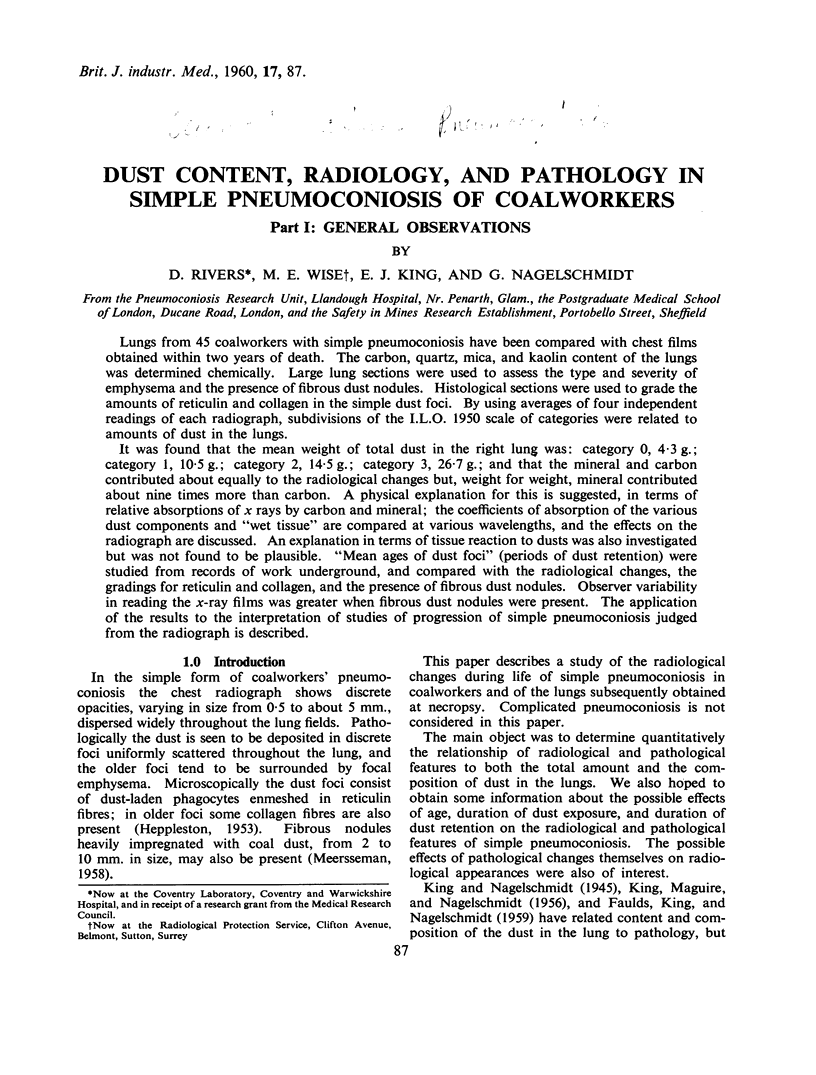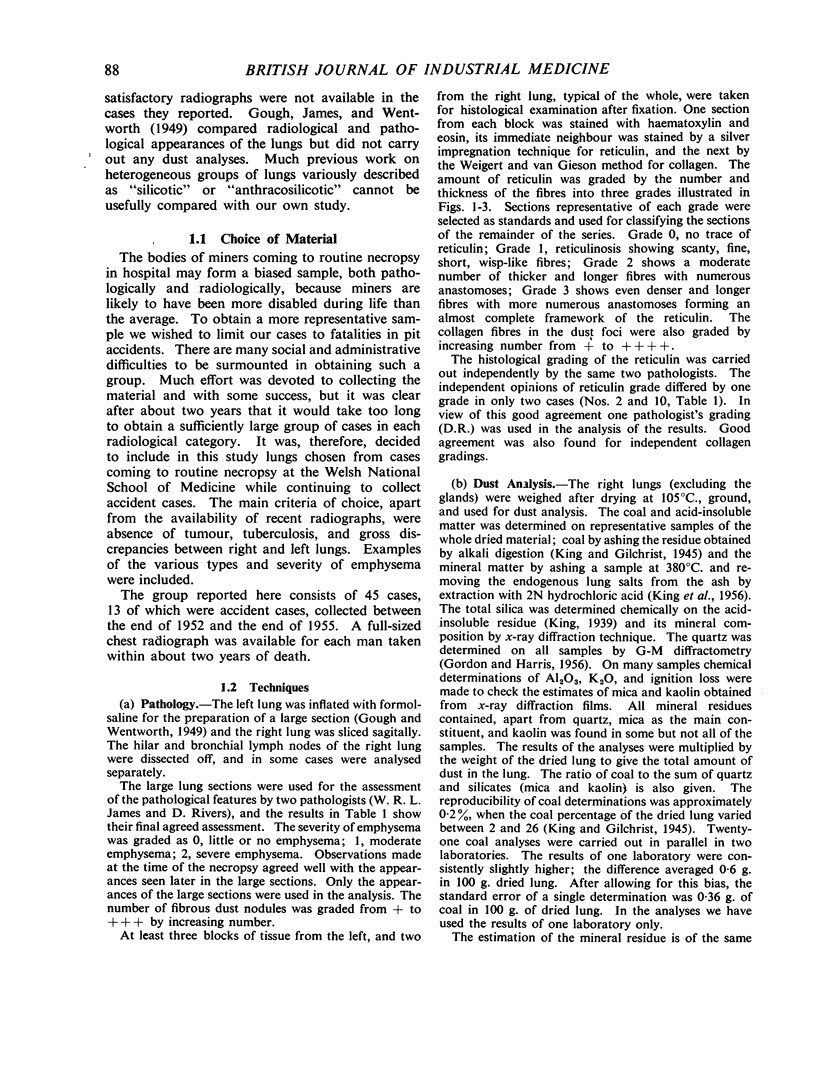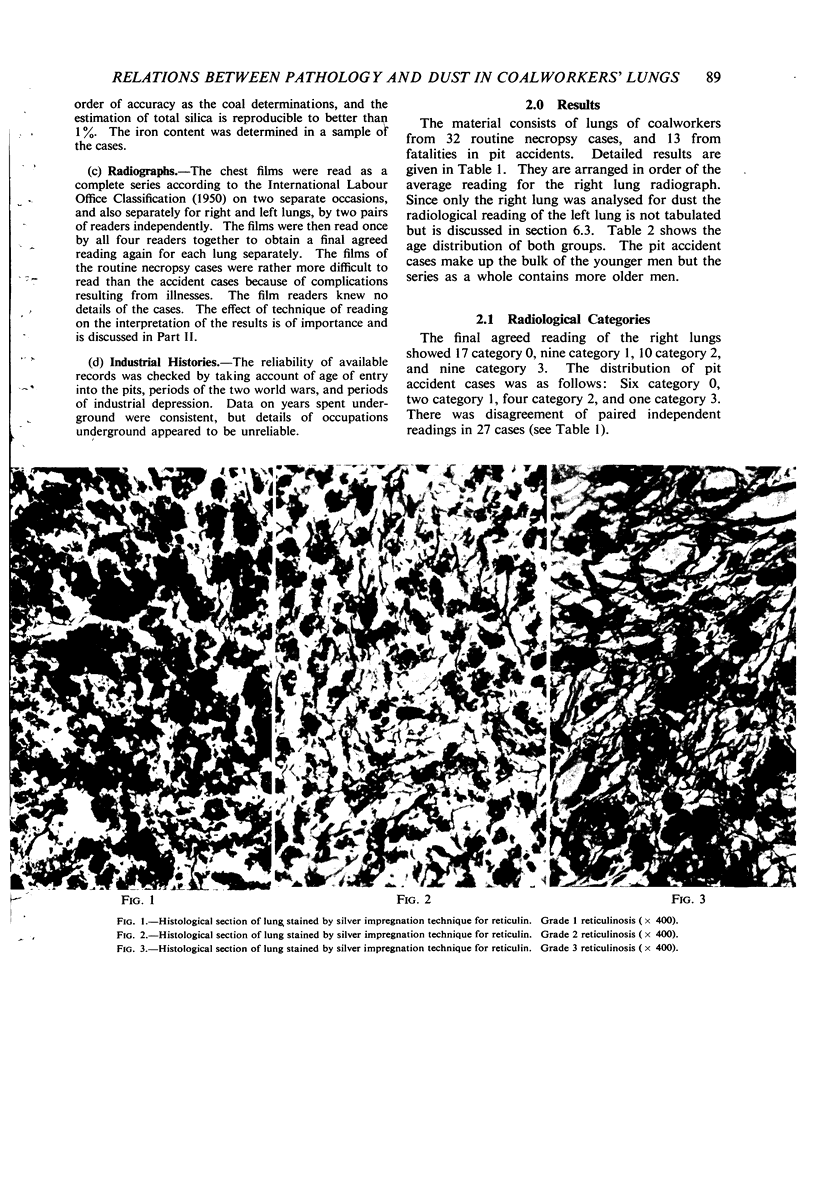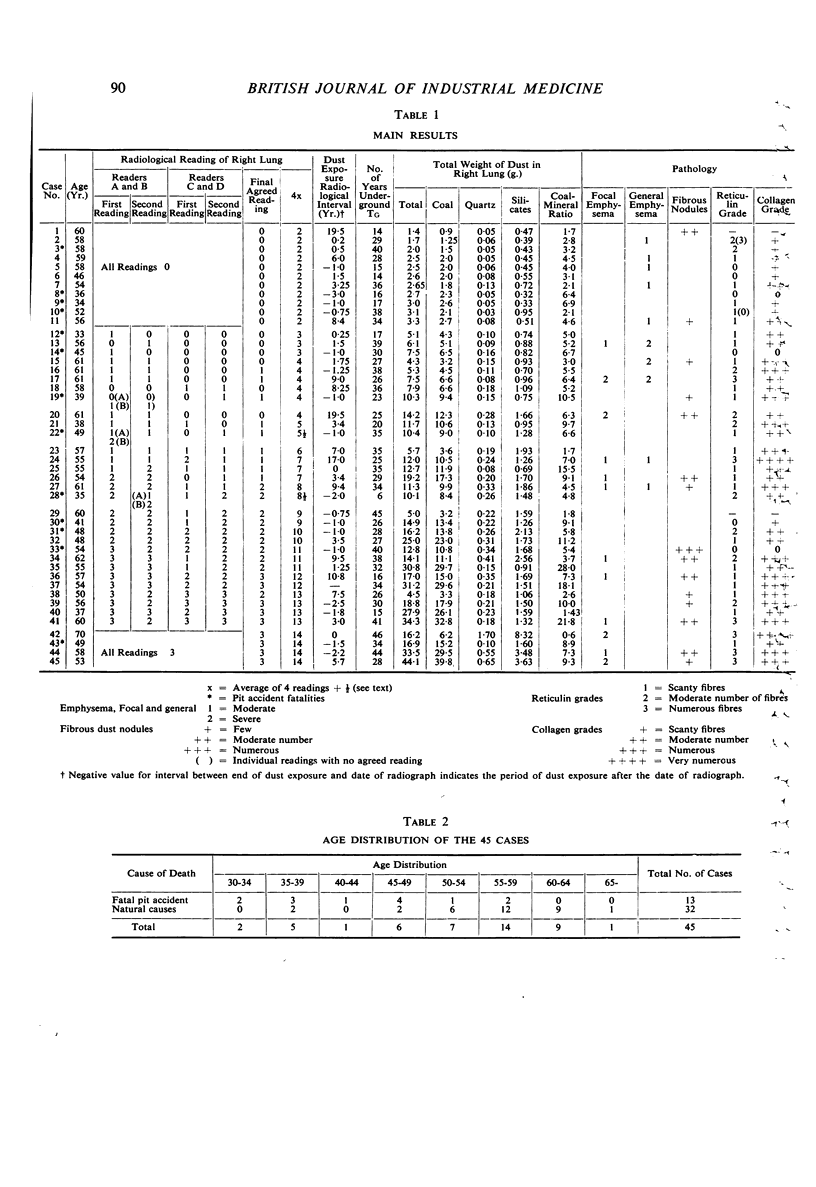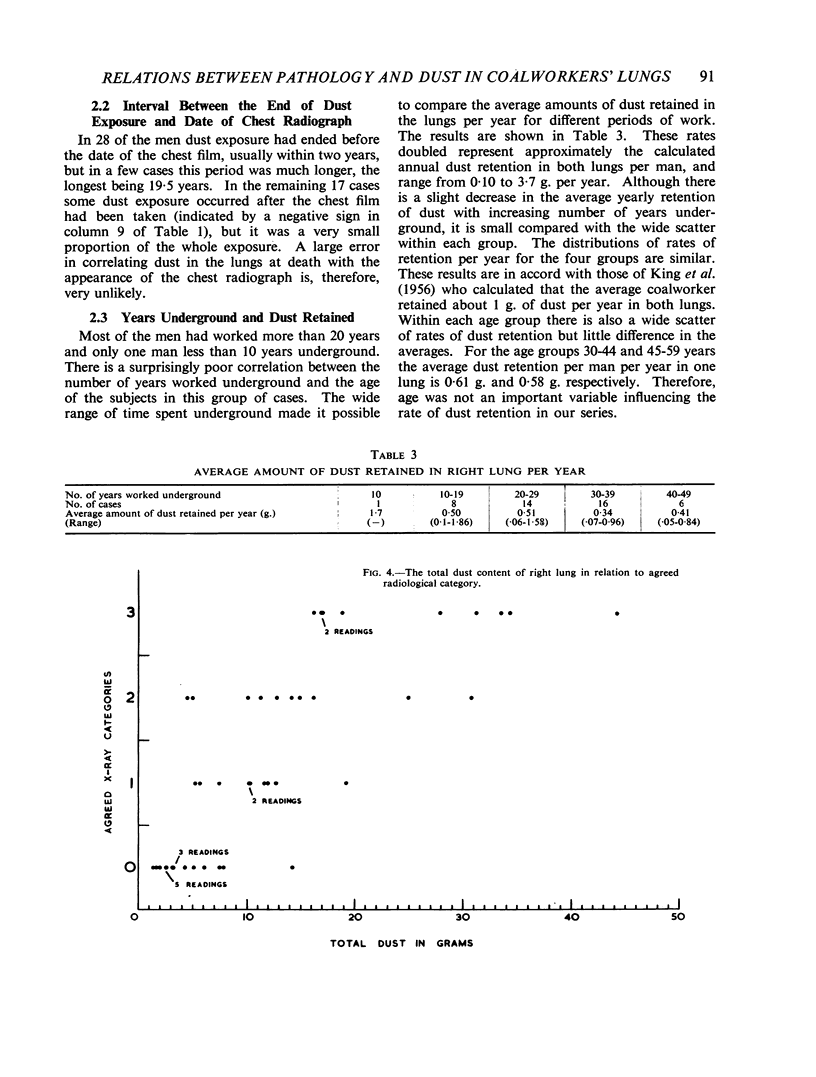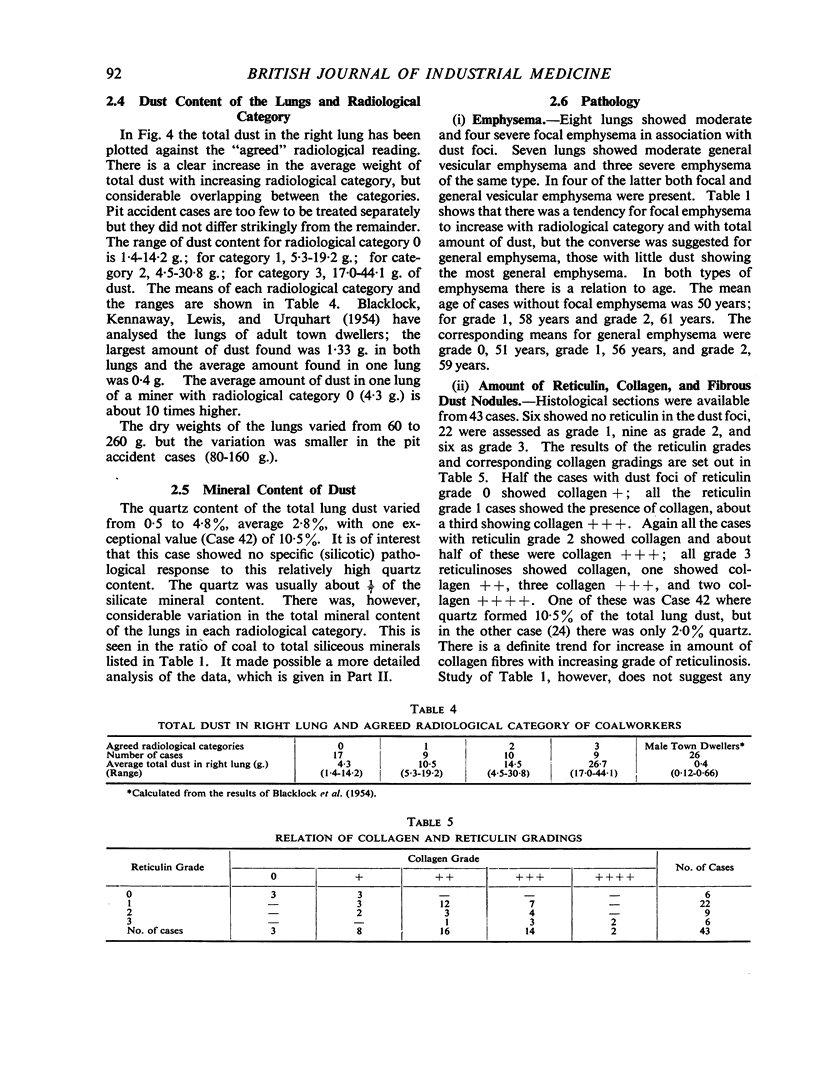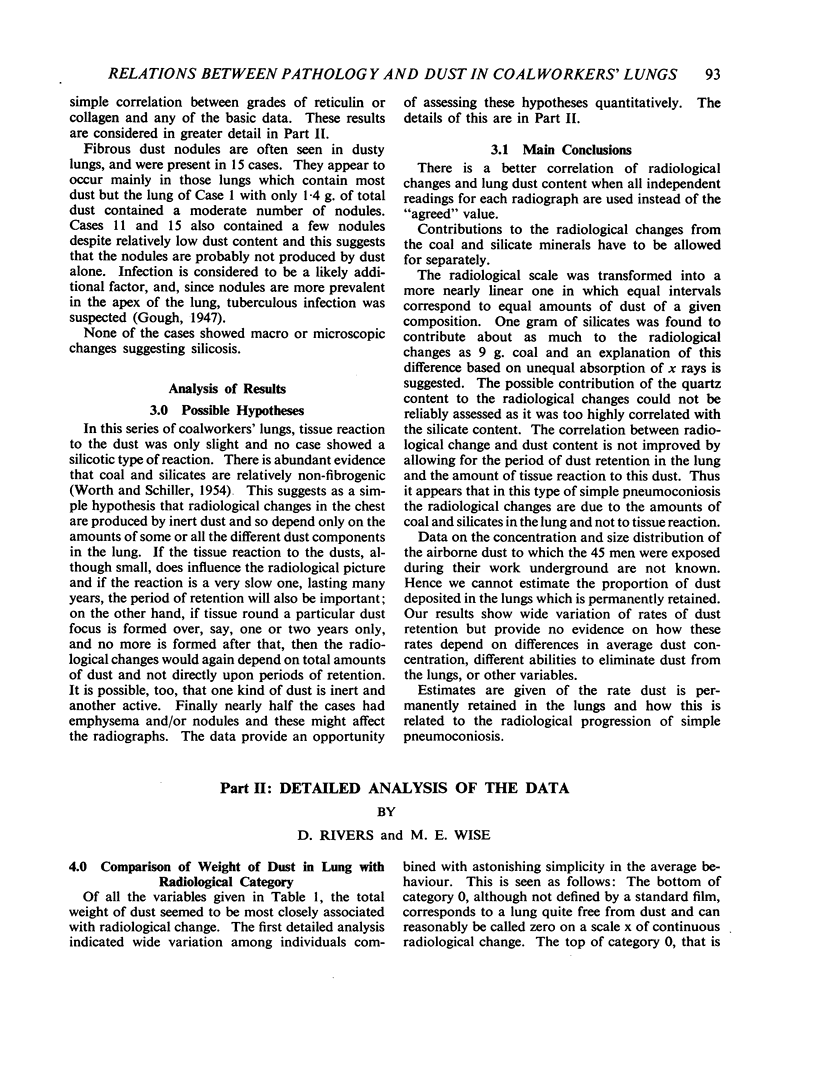Abstract
Lungs from 45 coalworkers with simple pneumoconiosis have been compared with chest films obtained within two years of death. The carbon, quartz, mica, and kaolin content of the lungs was determined chemically. Large lung sections were used to assess the type and severity of emphysema and the presence of fibrous dust nodules. Histological sections were used to grade the amounts of reticulin and collagen in the simple dust foci. By using averages of four independent readings of each radiograph, subdivisions of the I.L.O. 1950 scale of categories were related to amounts of dust in the lungs.
It was found that the mean weight of total dust in the right lung was: category 0, 4·3 g.; category 1, 10·5 g.; category 2, 14·5 g.; category 3, 26·7 g.; and that the mineral and carbon contributed about equally to the radiological changes but, weight for weight, mineral contributed about nine times more than carbon. A physical explanation for this is suggested, in terms of relative absorptions of ϰ rays by carbon and mineral; the coefficients of absorption of the various dust components and “wet tissue” are compared at various wavelengths, and the effects on the radiograph are discussed. An explanation in terms of tissue reaction to dusts was also investigated but was not found to be plausible. “Mean ages of dust foci” (periods of dust retention) were studied from records of work underground, and compared with the radiological changes, the gradings for reticulin and collagen, and the presence of fibrous dust nodules. Observer variability in reading the ϰ-ray films was greater when fibrous dust nodules were present. The application of the results to the interpretation of studies of progression of simple pneumoconiosis judged from the radiograph is described.
Full text
PDF